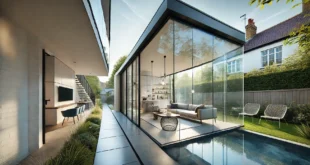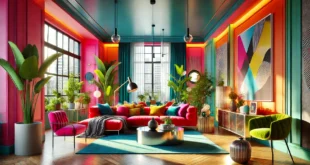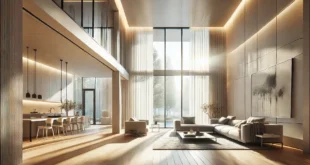Understanding the Basics of Rustic Design
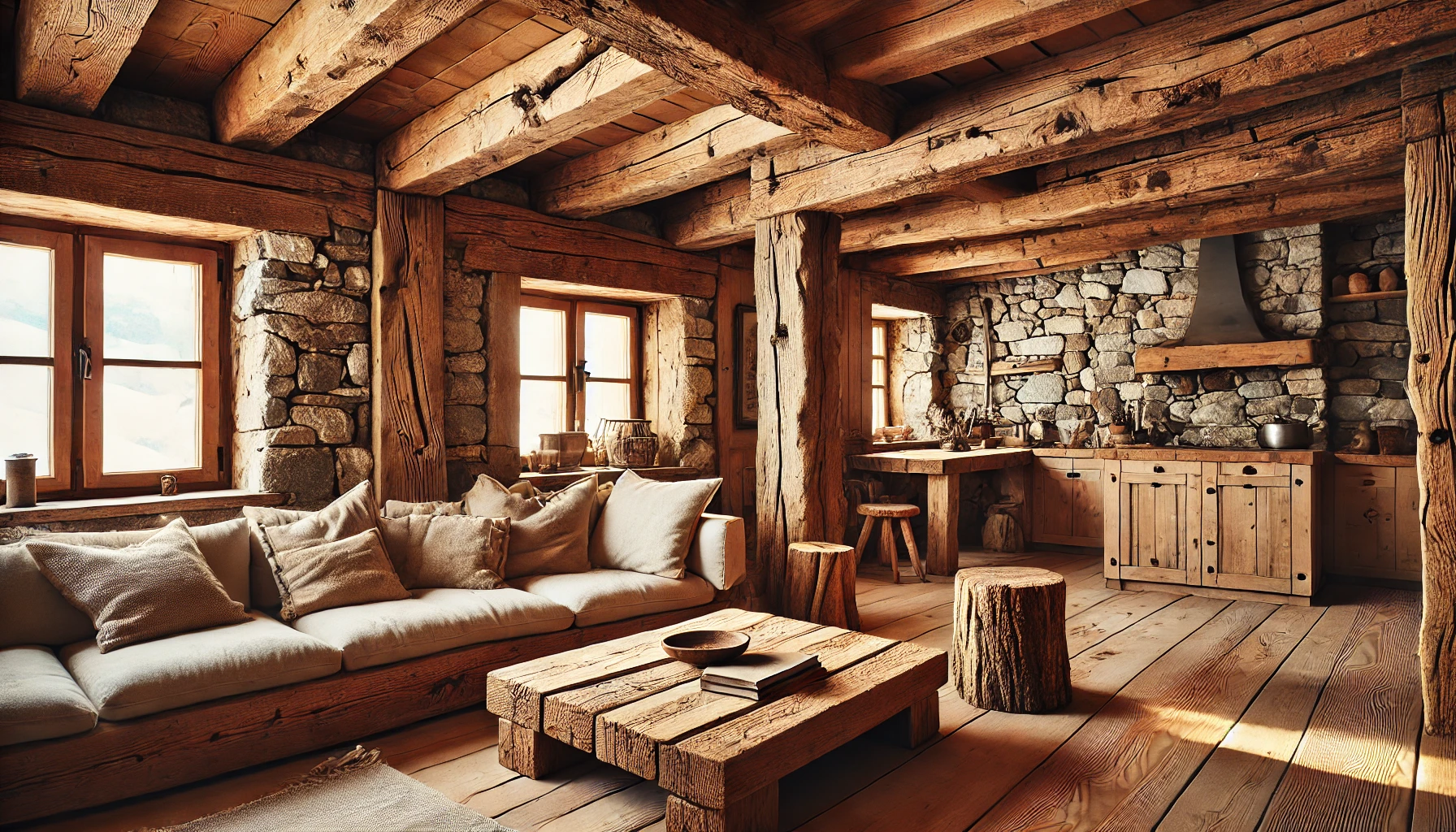
Rustic home design is all about creating a warm, inviting environment that feels natural and authentic. This style draws inspiration from rural and farmhouse aesthetics, where natural materials like wood, stone, and metal are prominently featured. The goal is to create a space that feels comfortable and lived-in, with a sense of history and connection to the natural world. Rustic design rejects the polished, manufactured look of modern homes and instead embraces the imperfections and textures of natural materials.
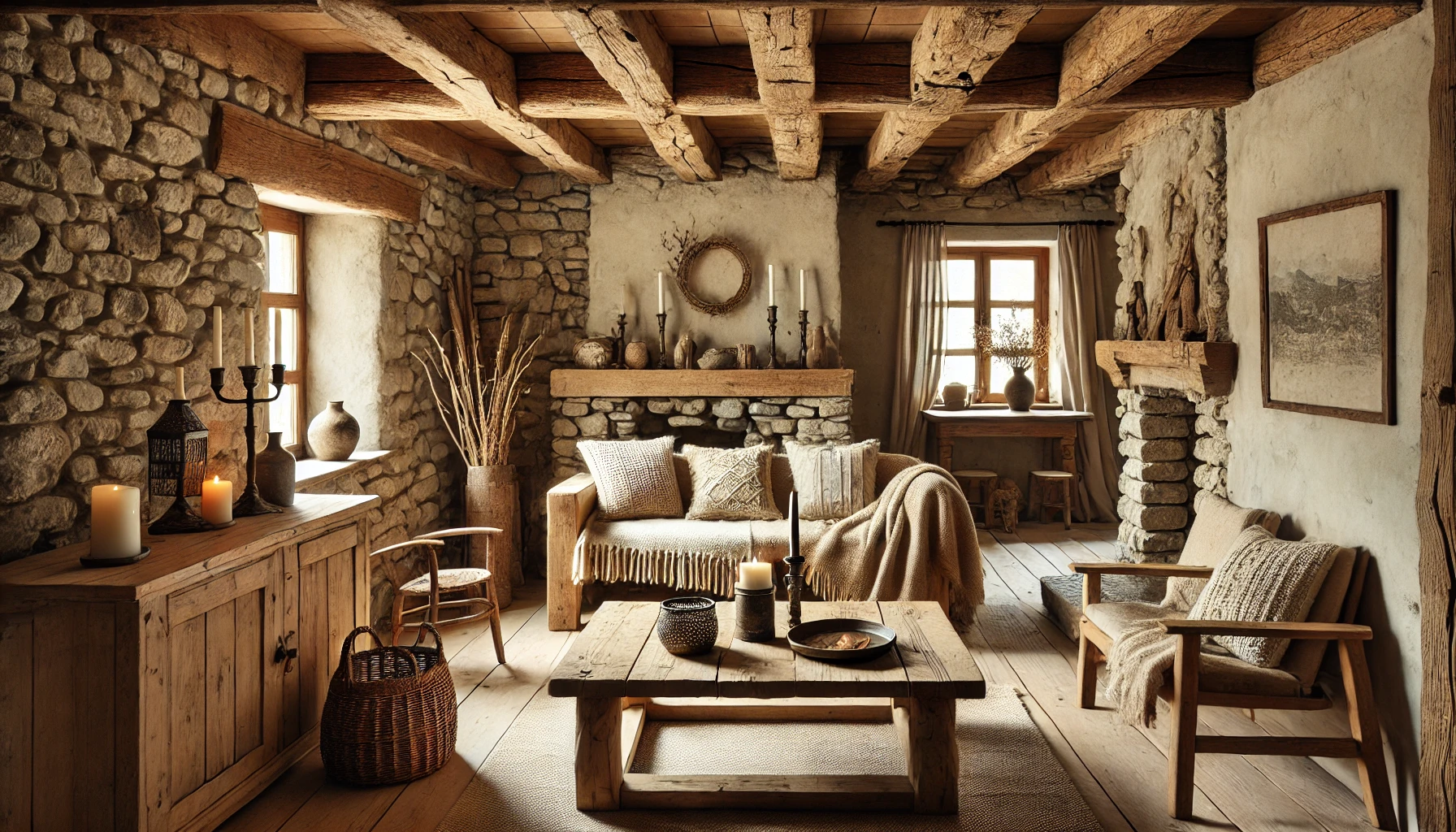
One of the key elements of rustic design is its focus on natural materials. Exposed wooden beams, stone walls, and raw, unfinished surfaces are common features in rustic homes. These materials are often left in their natural state, allowing their imperfections to add character and charm to the space. This creates a warm and welcoming atmosphere that invites relaxation and comfort. Rustic design typically incorporates elements that are functional and simple, yet beautiful in their ruggedness, making it a timeless choice for those looking to create a comfortable and grounded living space.
Origins and Evolution of Rustic Home Design
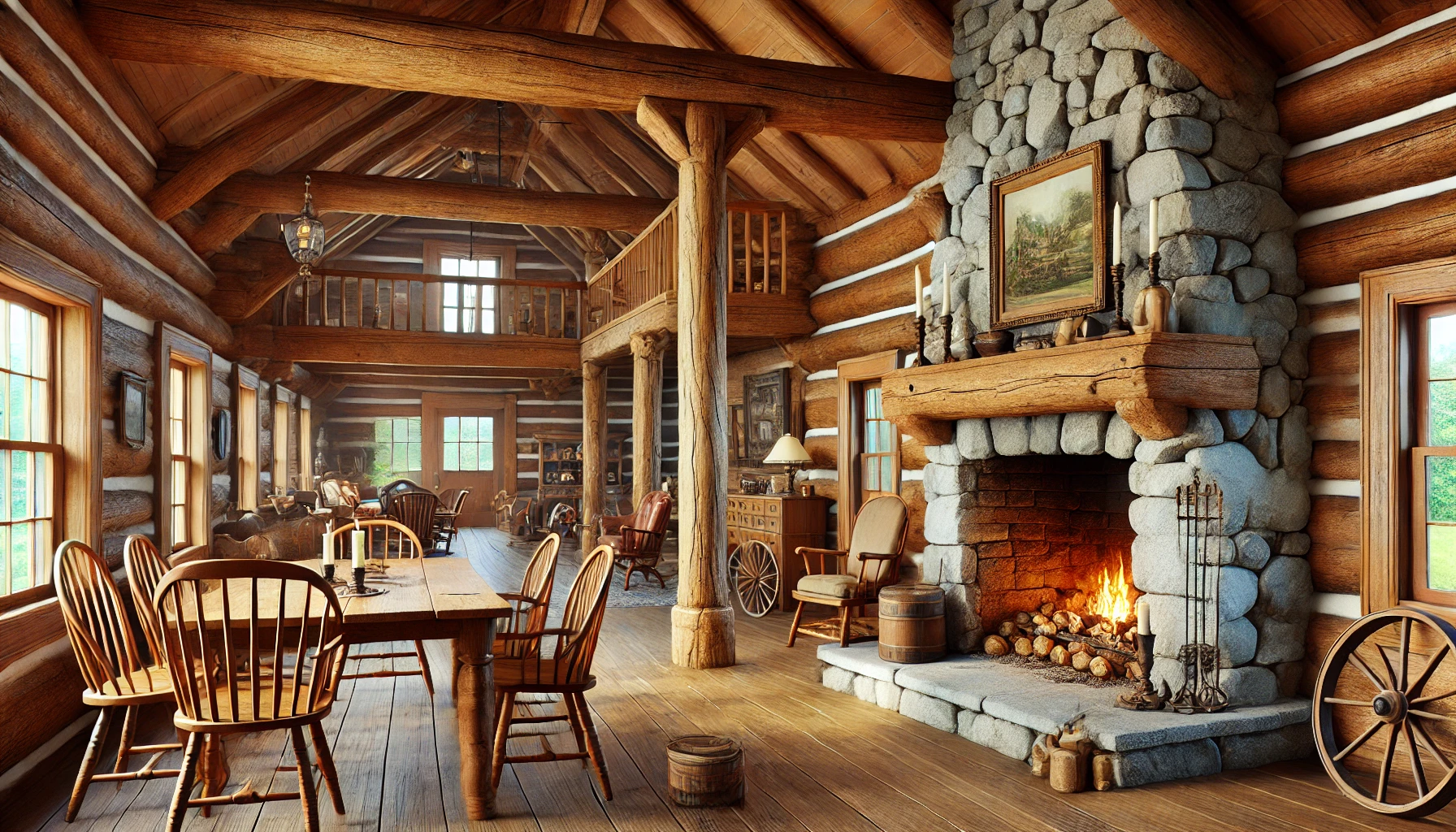
Rustic home design has its roots in the early homes of rural and agricultural communities, where materials were sourced locally, and construction techniques were simple and practical. Over time, this design style evolved to include more refined and decorative elements, but it has always maintained its connection to nature and simplicity. Today, rustic design is a popular choice for those who want to create a cozy, lived-in atmosphere that feels authentic and grounded.
The rustic style has been influenced by various cultures and regions, from the log cabins of the American frontier to the stone cottages of the European countryside. Each region has its own take on rustic design, but the core principles remain the same: a focus on natural materials, a connection to nature, and a sense of warmth and comfort. This historical context gives rustic design a timeless appeal, making it a popular choice for homes that aim to be both beautiful and functional, with a deep-rooted connection to tradition and nature.
How to Incorporate Rustic Home Design in Modern Interiors
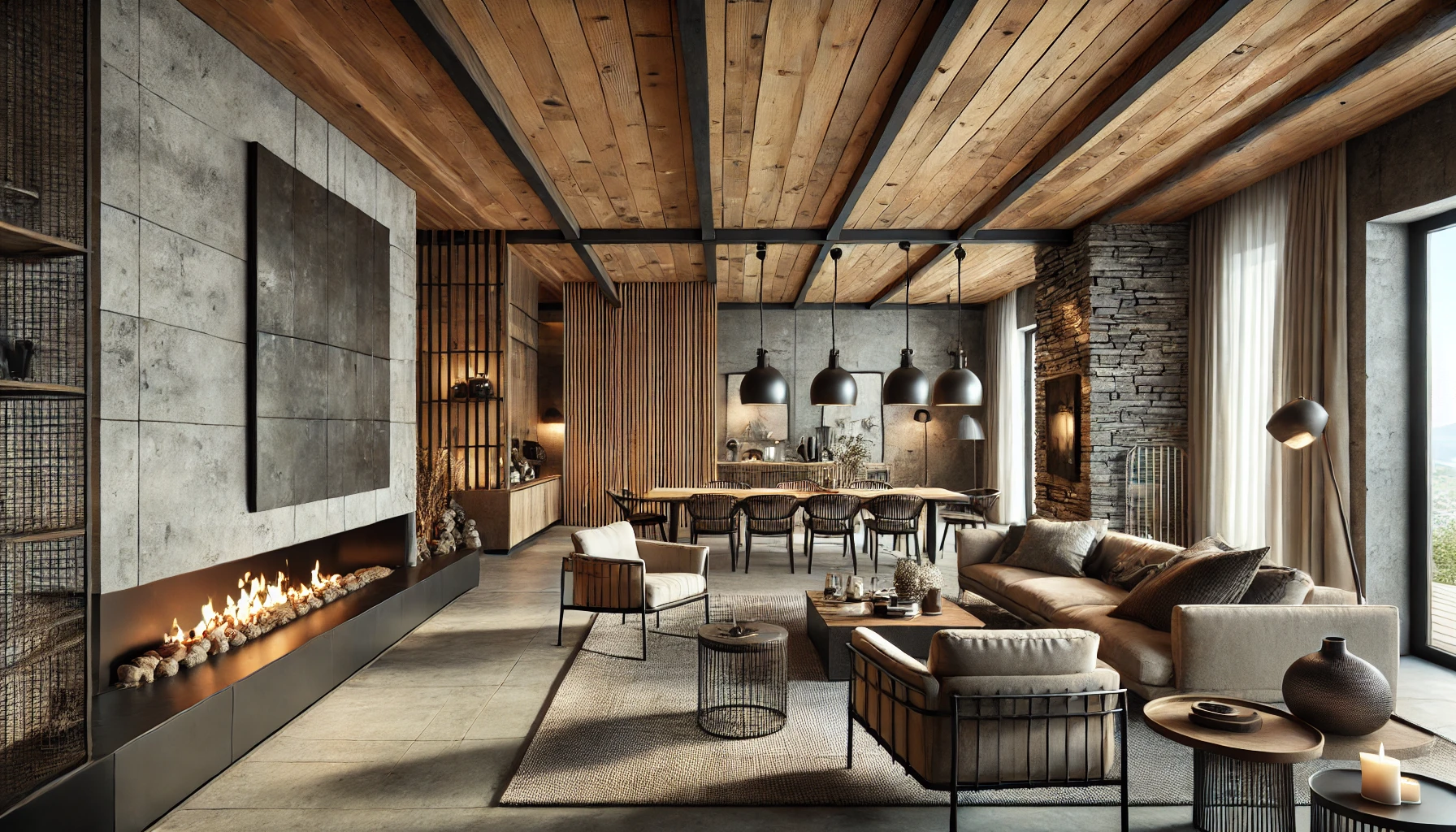
Best Ways to Use Natural Materials in Rustic Design
One of the key elements of rustic home design is its use of natural materials. Wood is perhaps the most iconic material in rustic design, used for everything from flooring and walls to furniture and decorative accents. Exposed wooden beams, in particular, are a hallmark of rustic homes. These beams not only add architectural interest but also create a sense of warmth and coziness. The beauty of wood in rustic design lies in its imperfections—knots, cracks, and grain patterns that give each piece a unique character and tell the story of its origin.
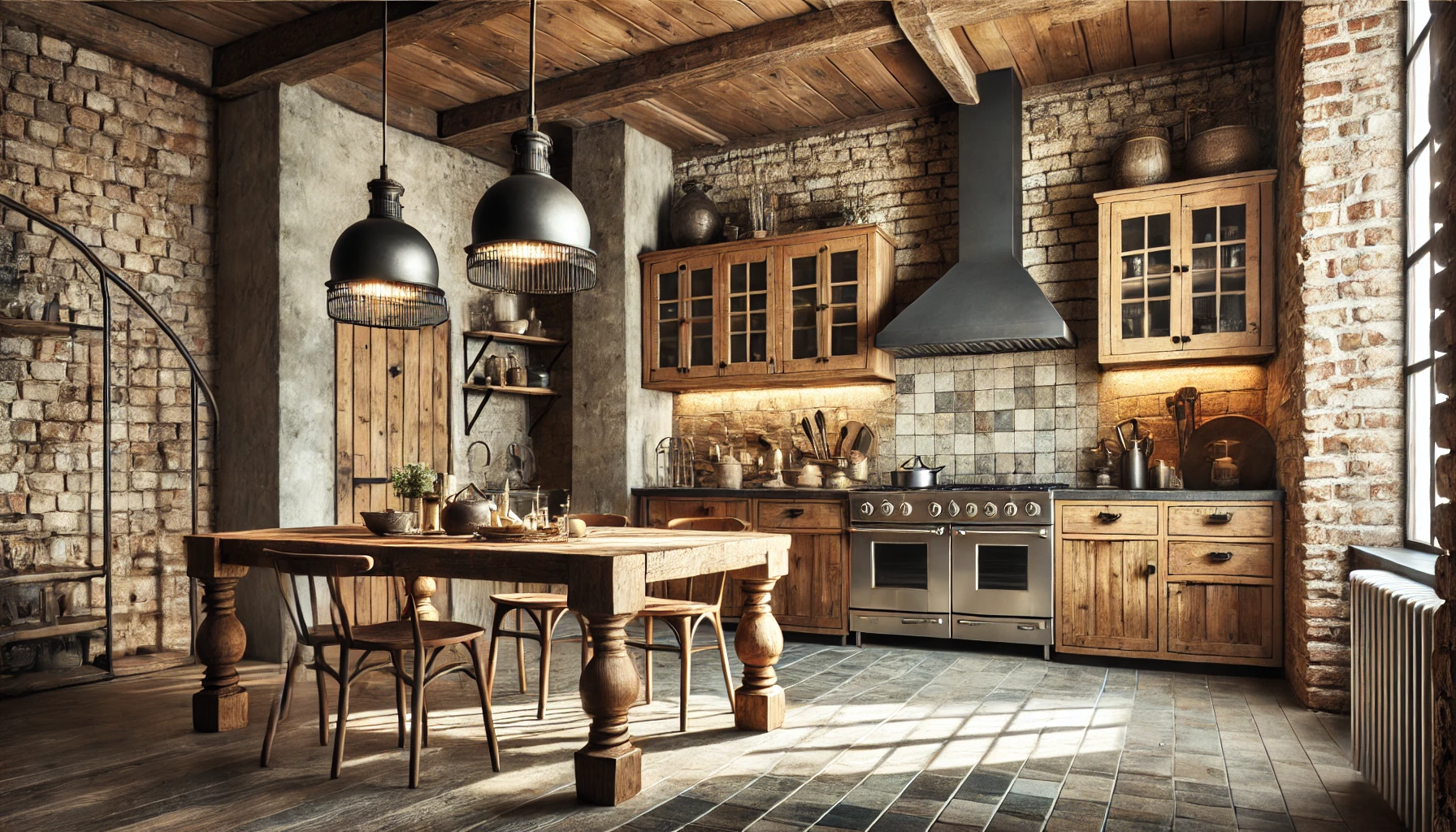
In addition to wood, stone is another key material in rustic design. Stone fireplaces, walls, and even floors add texture and durability to the space. The rough, natural texture of stone complements the warmth of wood, creating a balanced and inviting environment. Metal is also commonly used in rustic design, often in the form of wrought iron or steel accents, light fixtures, and hardware. These materials are typically left in their natural state, allowing their raw beauty to shine through. The combination of wood, stone, and metal creates a harmonious blend that is both rugged and elegant, making rustic design adaptable to both traditional and modern homes.
How to Create a Rustic Look Using Reclaimed Wood
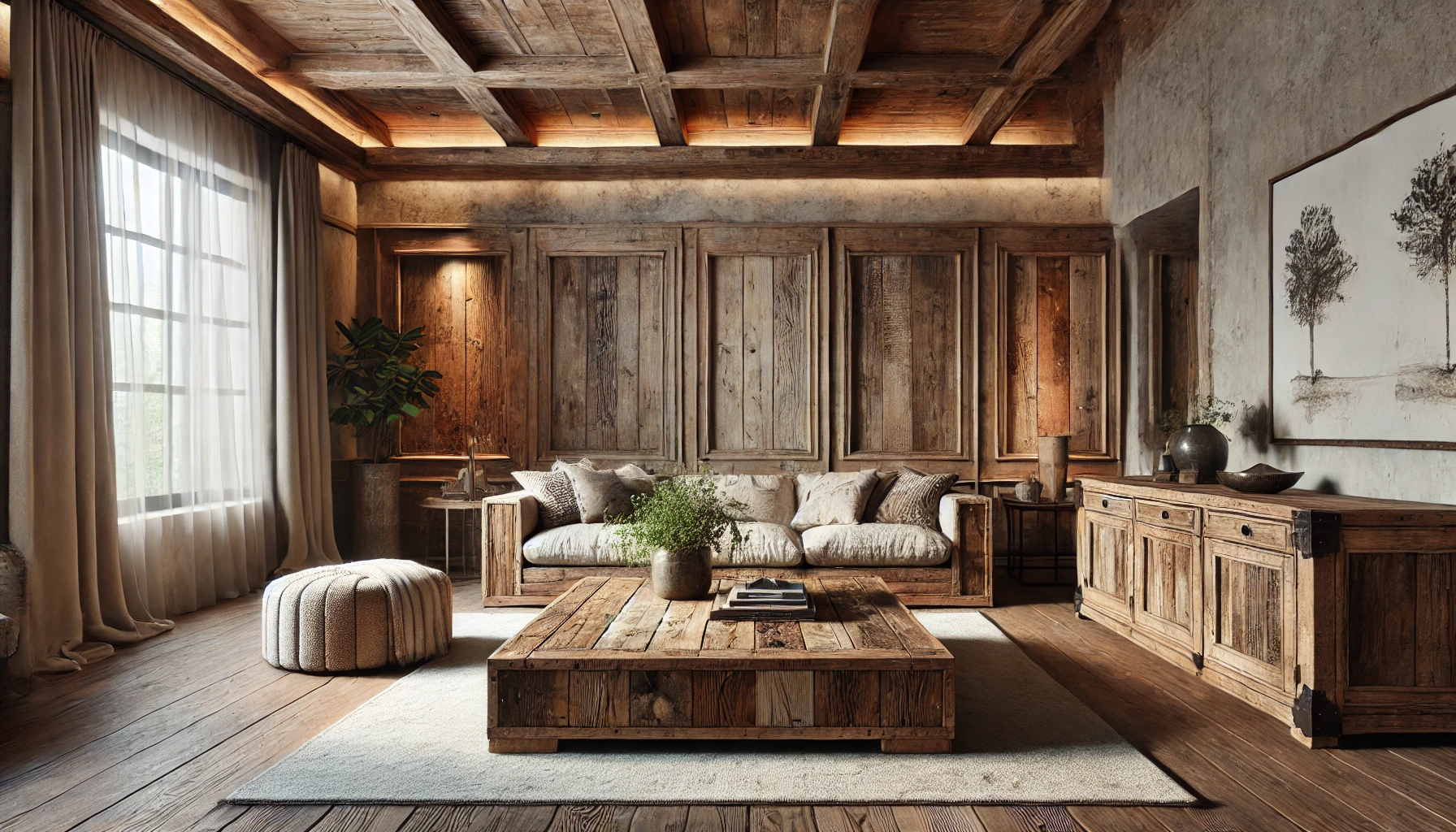
Reclaimed wood is a popular choice for those looking to incorporate rustic elements into their home design. This type of wood has been salvaged from old buildings, barns, or other structures and repurposed for use in modern interiors. The weathered appearance of reclaimed wood, with its rich patina and natural imperfections, adds character and history to any space. Whether used for flooring, wall paneling, or furniture, reclaimed wood brings a sense of authenticity to rustic home design that is hard to replicate with new materials.
One of the benefits of using reclaimed wood is its sustainability. By reusing existing materials, you are reducing the demand for new lumber and minimizing the environmental impact of your home renovation or design project. Reclaimed wood also tends to be more durable than newer wood, as it has already withstood the test of time. This makes it a great option for high-traffic areas or spaces where durability is a priority. Additionally, each piece of reclaimed wood has its own unique history and character, making it a conversation starter and a focal point in any rustic home.
The Top Rustic Home Decor Ideas to Elevate Your Space
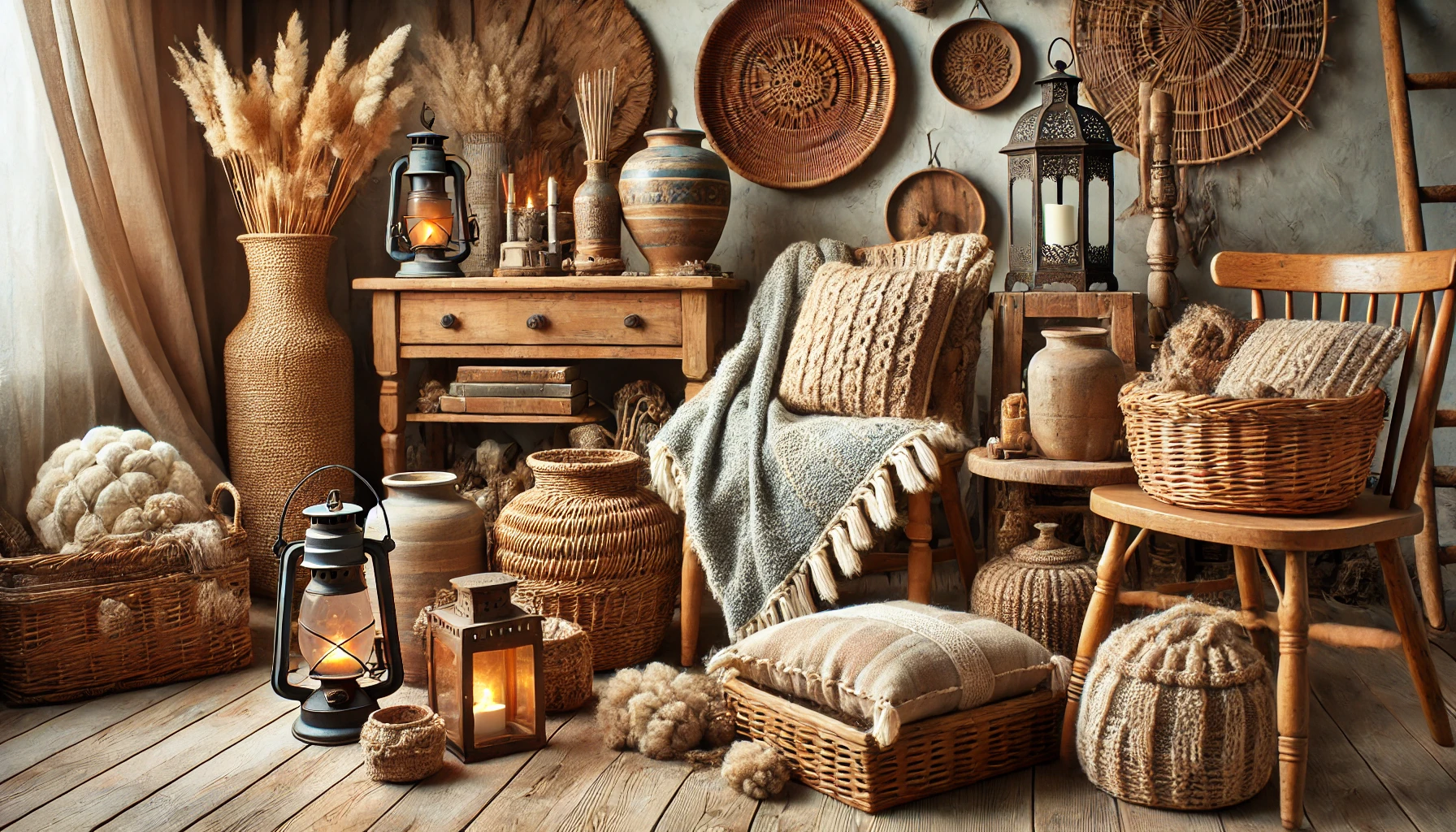
How to Decorate Your Rustic Home for Maximum Impact
When it comes to decorating a rustic home, less is often more. The goal is to create a space that feels cozy and lived-in, without feeling cluttered. Rustic decor often features natural materials and handcrafted items. Woven baskets, wool blankets, and stoneware pottery are all popular decor choices in rustic homes. These elements add texture and warmth to the space, creating a welcoming environment that encourages relaxation and comfort.
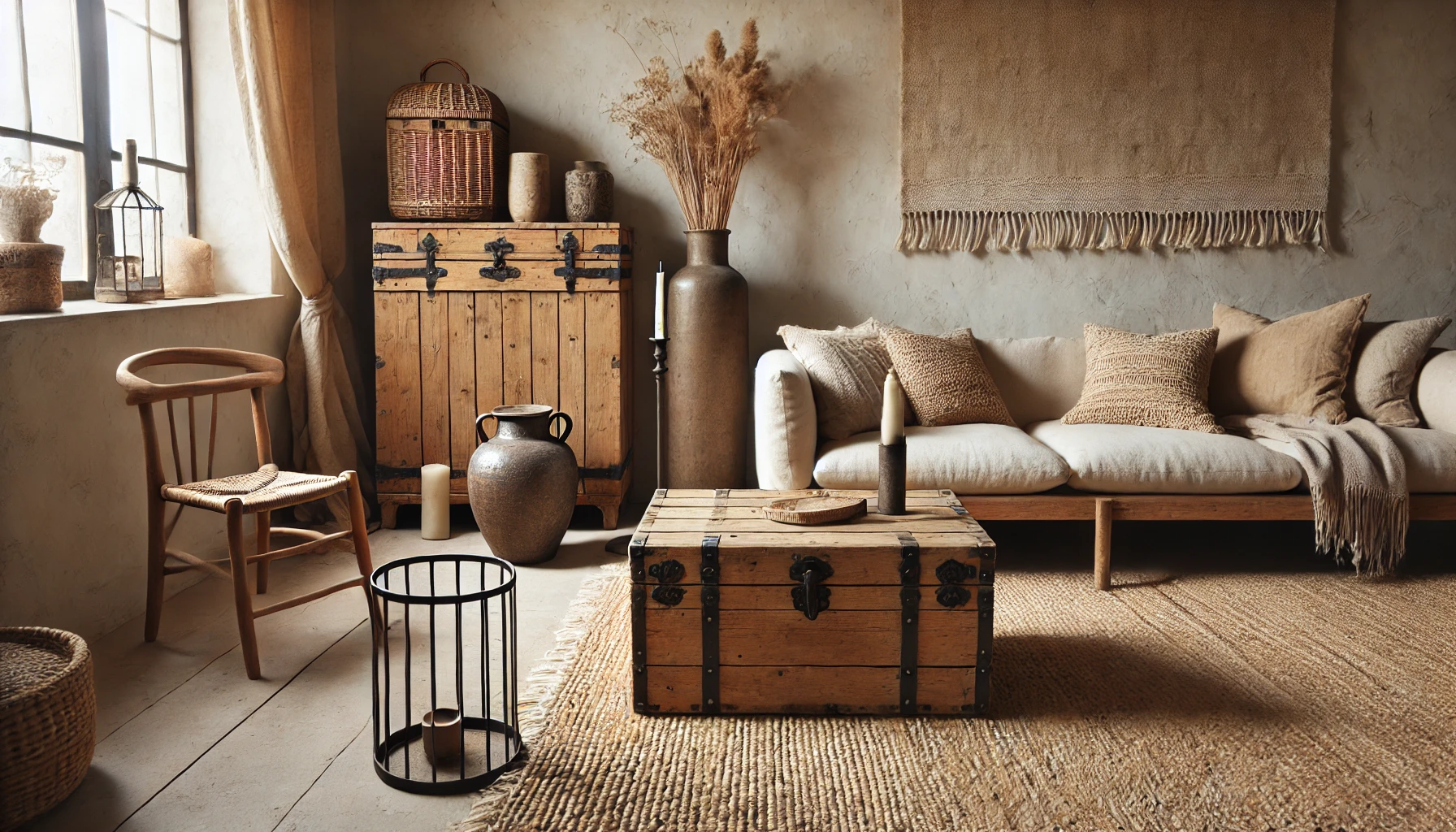
In addition to natural materials, vintage and antique items are also commonly used in rustic decor. A weathered wooden chest, an old iron lantern, or a set of antique tools can add character and charm to the space. The key is to choose pieces that complement the natural beauty of the space without overwhelming it. The decor should enhance the overall rustic feel, creating a warm and inviting environment. When selecting decor for a rustic home, it’s important to focus on items that have a sense of history and craftsmanship, as these elements are what give rustic design its timeless appeal.
How to Choose the Perfect Rustic Color Palette
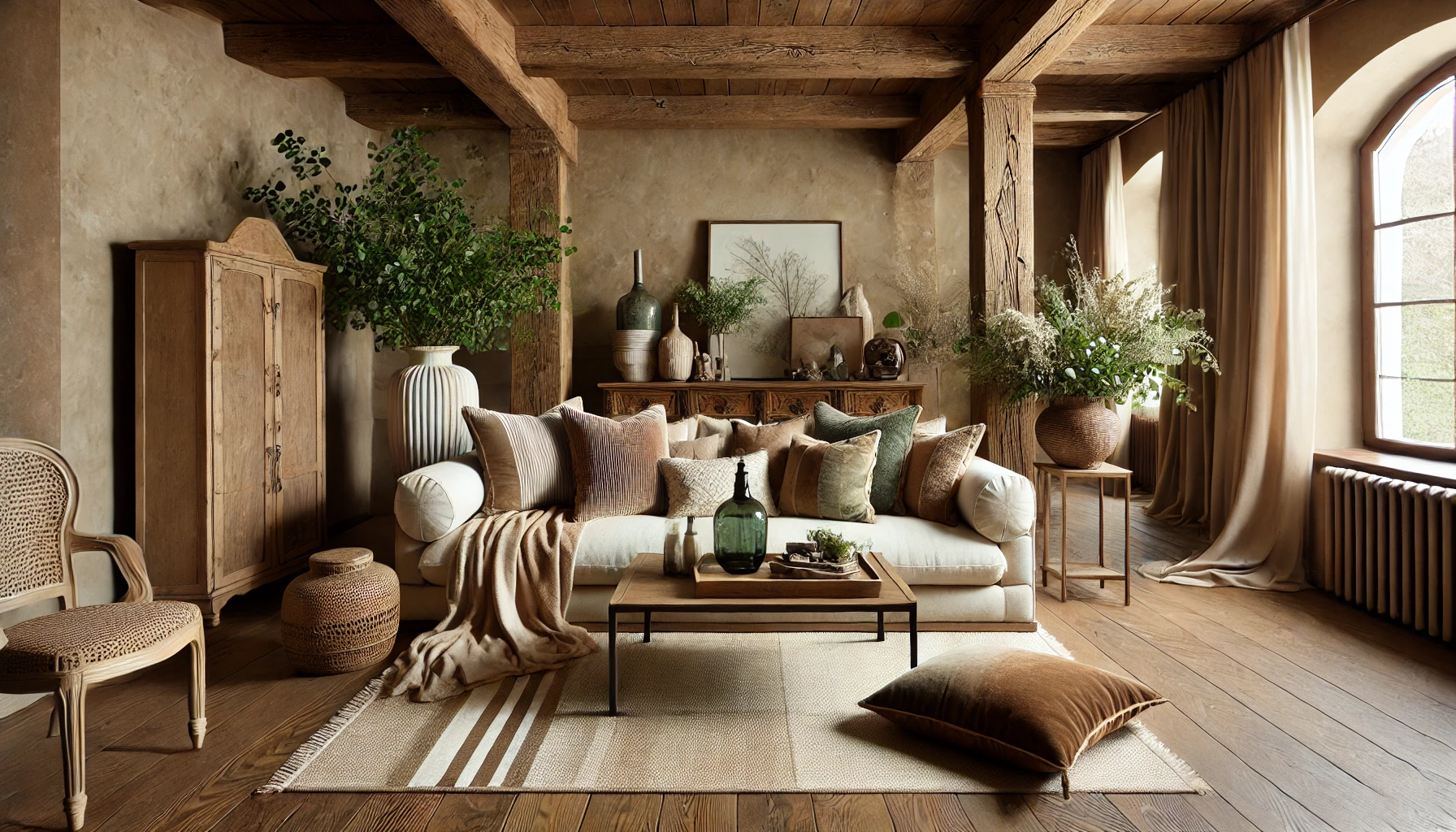
The color palette in rustic design is inspired by the natural world. Earthy tones like brown, beige, gray, and green are commonly used, as they complement the natural materials found in the space. These colors create a calm, soothing environment that feels grounded and connected to nature. While rustic design typically favors neutral colors, it’s not uncommon to see pops of color in the form of accent pieces like pillows, rugs, or artwork. These accents can add a touch of personality to the space while still maintaining the overall rustic aesthetic.
The key to a successful rustic color palette is balance. The goal is to create a harmonious blend of tones that enhance the natural beauty of the materials in the space. Darker tones can add depth and richness, while lighter tones can help open up the space and make it feel more airy. Whether you’re painting the walls or choosing furniture, it’s important to stick to a color scheme that complements the overall rustic aesthetic. Natural tones and textures should always be the focus, with bold colors used sparingly to maintain the calm, serene feeling that rustic design is known for.
Rustic Lighting Ideas: How to Light Up Your Space Naturally
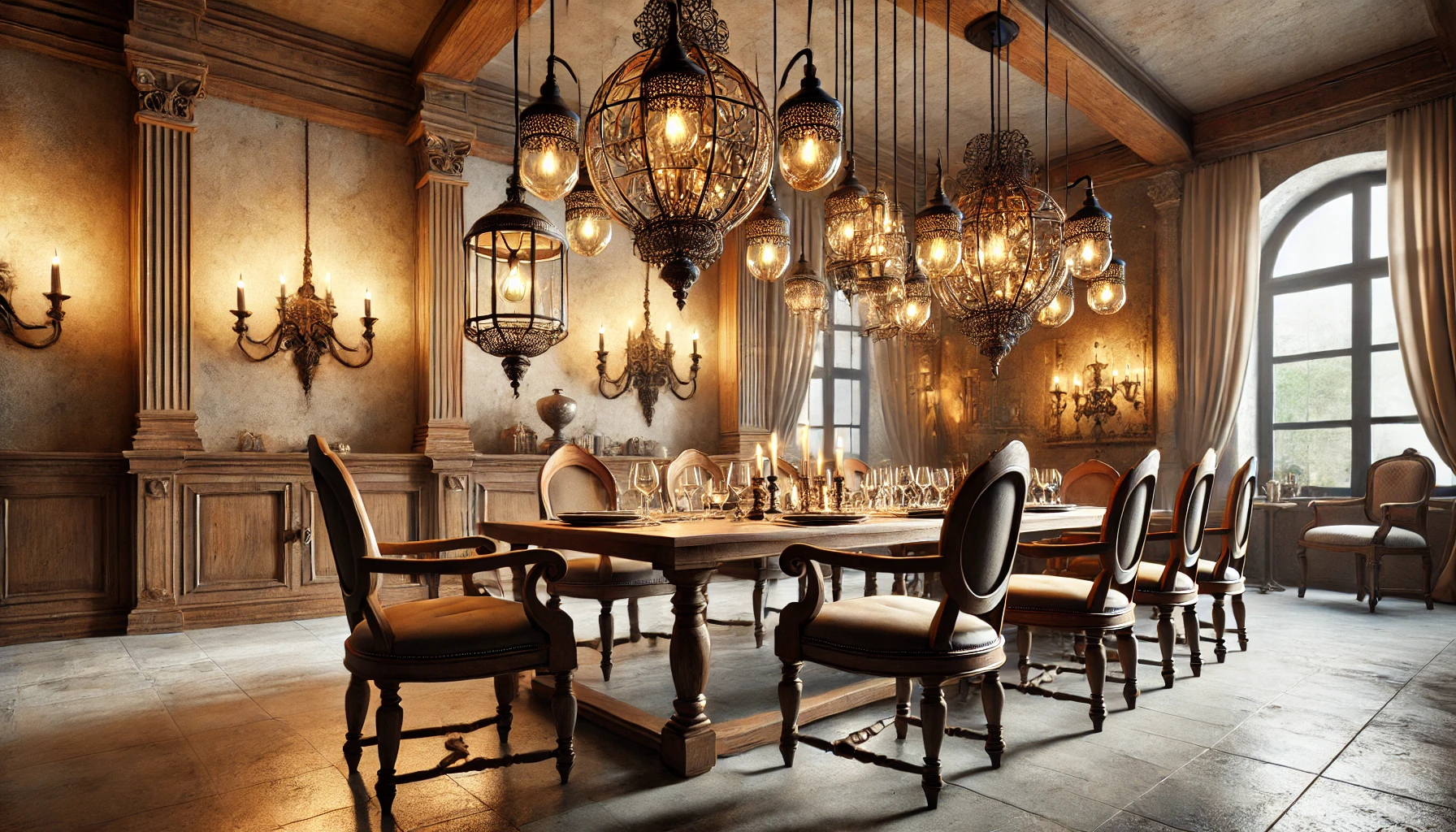
The Best Rustic Lighting Fixtures for Your Home
Lighting is an important element in rustic home design, as it helps create a warm and inviting atmosphere. In keeping with the natural theme, rustic lighting often features materials like metal, wood, and glass. Wrought iron chandeliers, wooden pendant lights, and vintage lanterns are all popular choices in rustic homes. These fixtures not only provide functional lighting but also add to the overall aesthetic of the space, enhancing the rustic charm of the home.
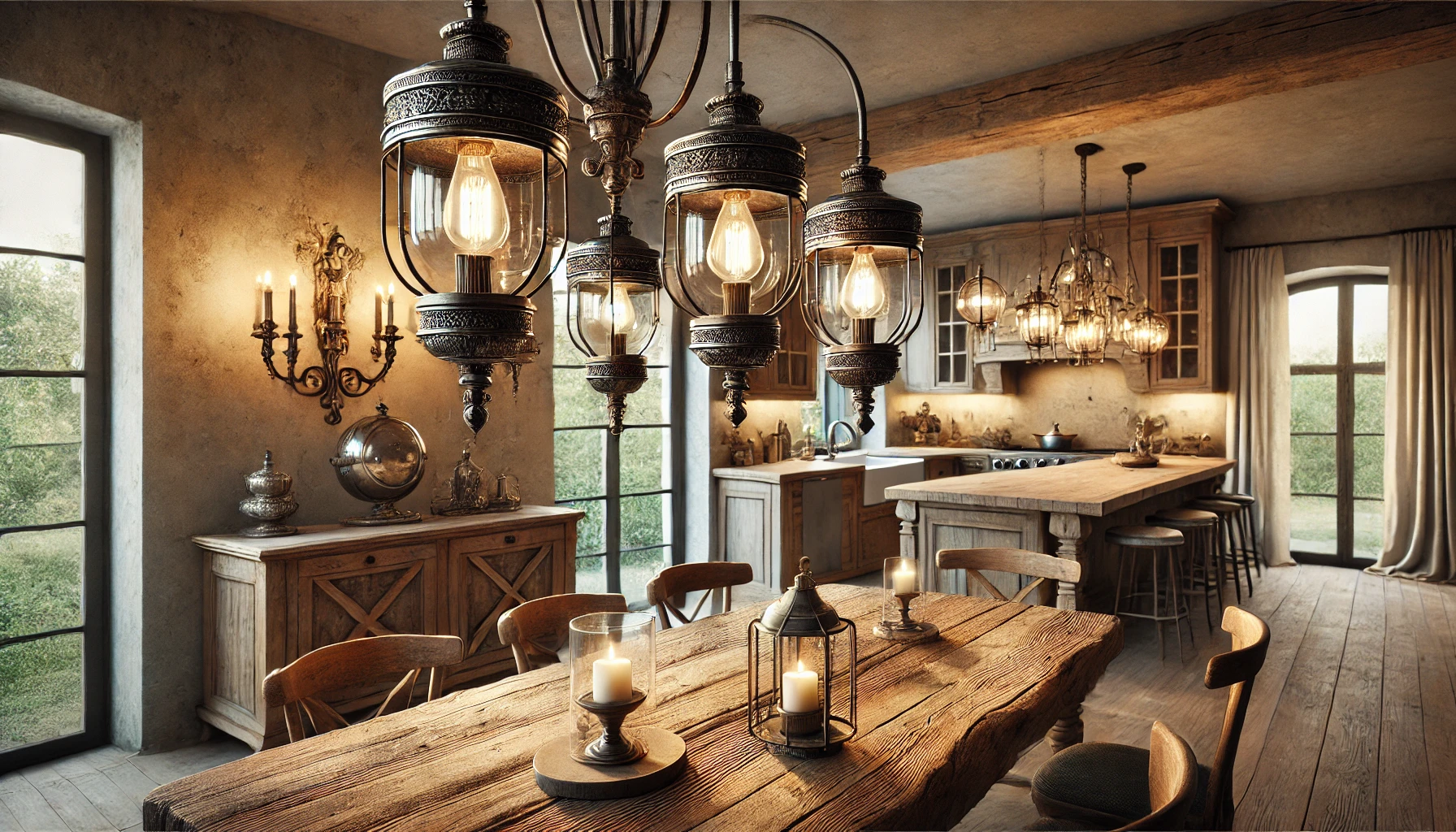
The lighting in a rustic home should be soft and warm, rather than harsh or overly bright. Candlelight, in particular, is a great way to create a cozy, intimate atmosphere. In addition to traditional lighting fixtures, incorporating natural light is also important in rustic design. Large windows, skylights, and glass doors can help bring the outdoors in, enhancing the connection to nature. The use of natural light can also help highlight the natural materials used throughout the space, such as wood and stone, making the home feel even more connected to its surroundings.
Rustic Outdoor Lighting for a Natural Ambiance
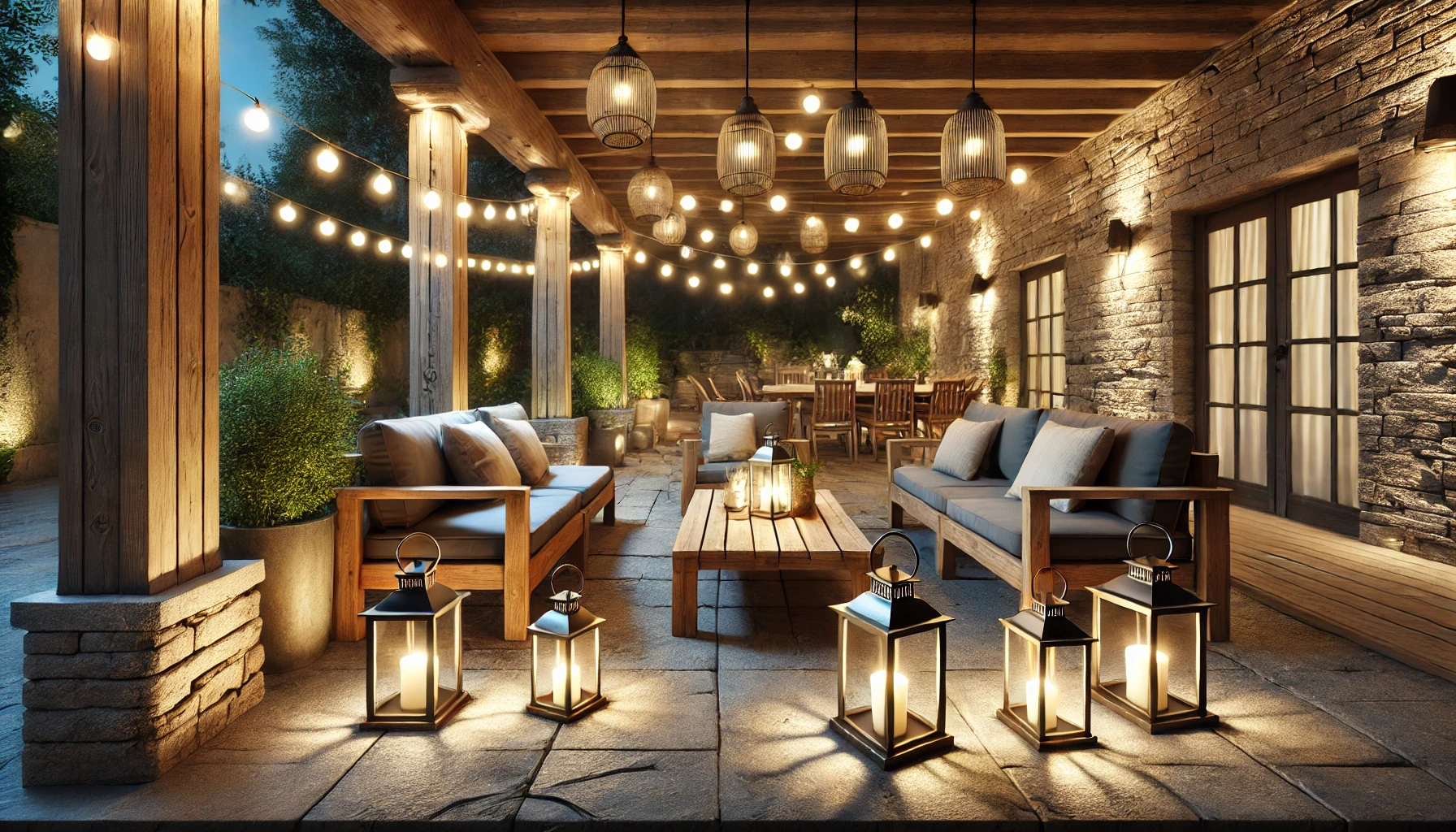
Outdoor lighting is another important aspect of rustic home design. Whether you’re illuminating a porch, patio, or garden, the lighting should complement the natural surroundings. Lanterns, string lights, and rustic sconces are all great options for outdoor lighting in a rustic space. These fixtures not only provide necessary lighting for outdoor activities but also enhance the overall aesthetic of the home, creating a seamless transition between indoor and outdoor living spaces.
In addition to enhancing the aesthetic appeal of the space, outdoor lighting also serves a practical purpose. It helps create a safe and inviting environment for entertaining guests or relaxing outdoors. The goal is to create a seamless transition between the indoor and outdoor spaces, allowing you to enjoy the natural beauty of your surroundings both day and night. Whether you’re lighting a path, highlighting a garden feature, or creating a cozy seating area, the right outdoor lighting can elevate the overall look and feel of your rustic home.
How to Add Rustic Accents to Your Modern Home
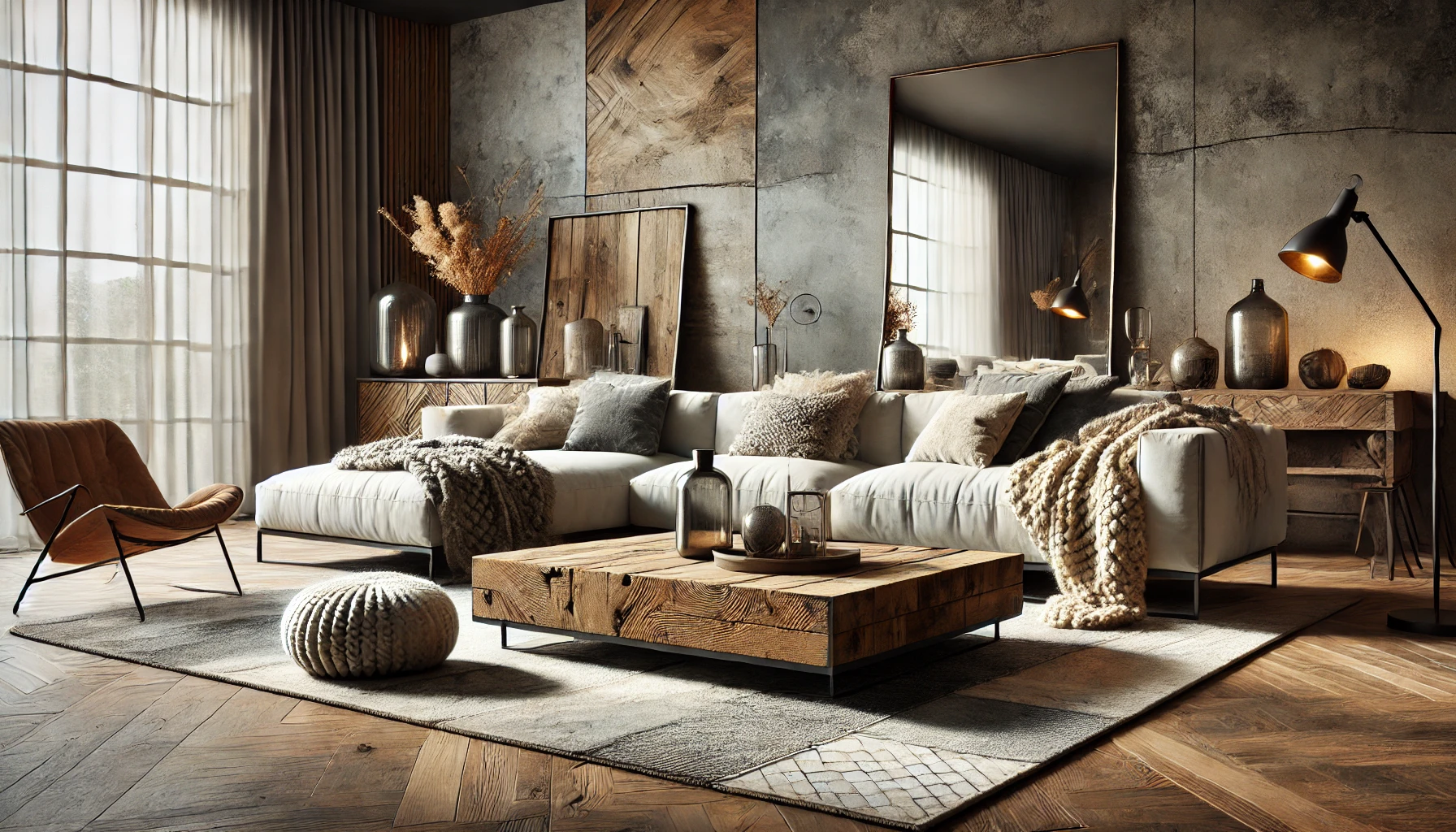
Simple Rustic Home Accessories That Make a Big Difference
Accessories play a crucial role in completing the rustic home design look. Small details, such as vintage clocks, wrought iron candle holders, and wool throws, can instantly transform a room. Look for pieces that add texture and warmth to the space, complementing the natural materials used throughout the home. Accessories should feel like they belong in the space and add to the overall sense of comfort and coziness that defines rustic design.
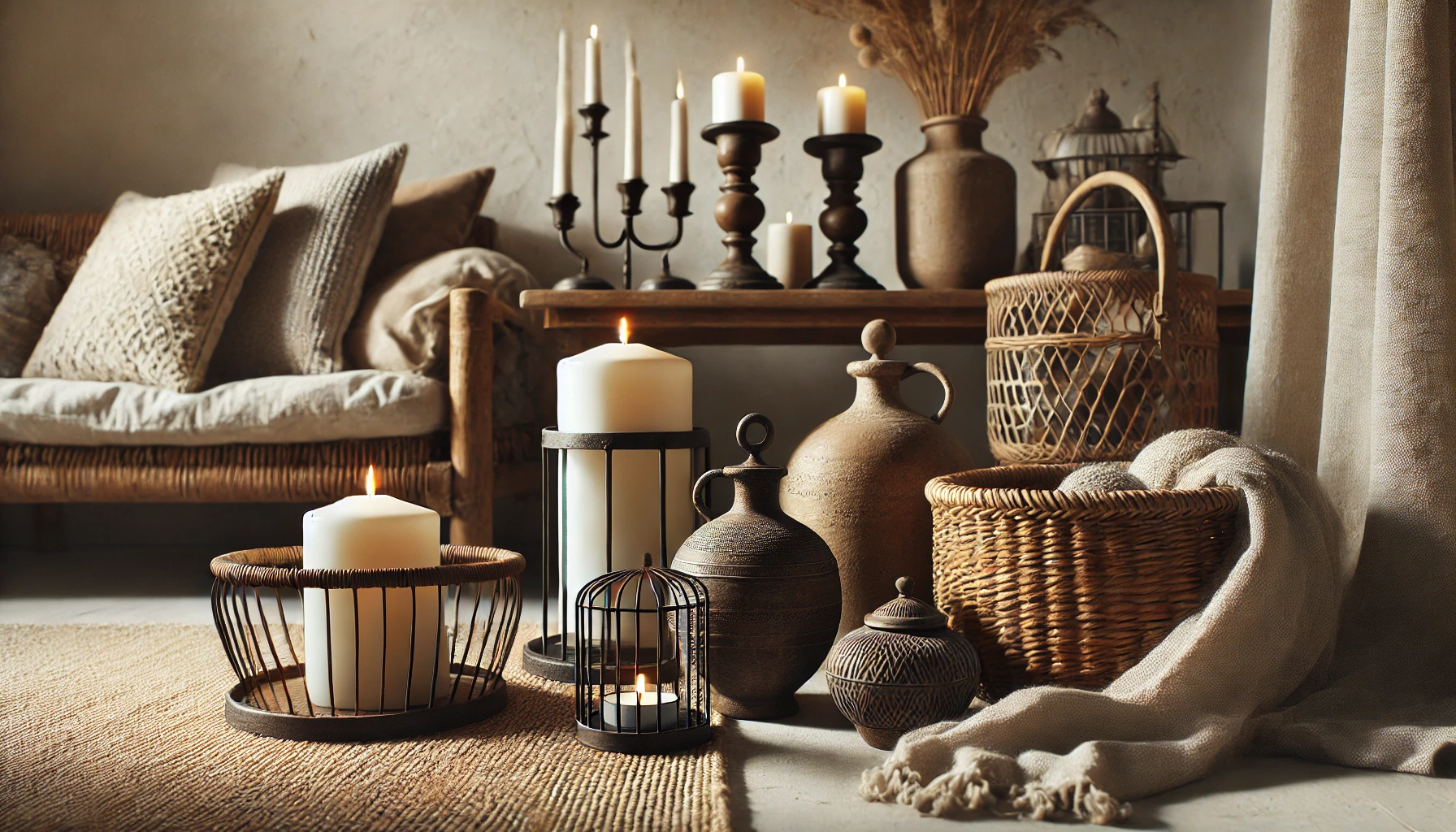
Consider using natural, handcrafted accessories like woven baskets or ceramic pottery to give your space an authentic rustic touch. These items not only enhance the design but also provide functional storage solutions, adding practicality to the beauty of the design. By focusing on accessories that are both beautiful and functional, you can create a space that feels lived-in and welcoming, without sacrificing style or comfort. The key to accessorizing a rustic home is to choose pieces that feel timeless and connected to nature, adding layers of warmth and character to the space.
Top Rustic Home Decor Trends You Should Try
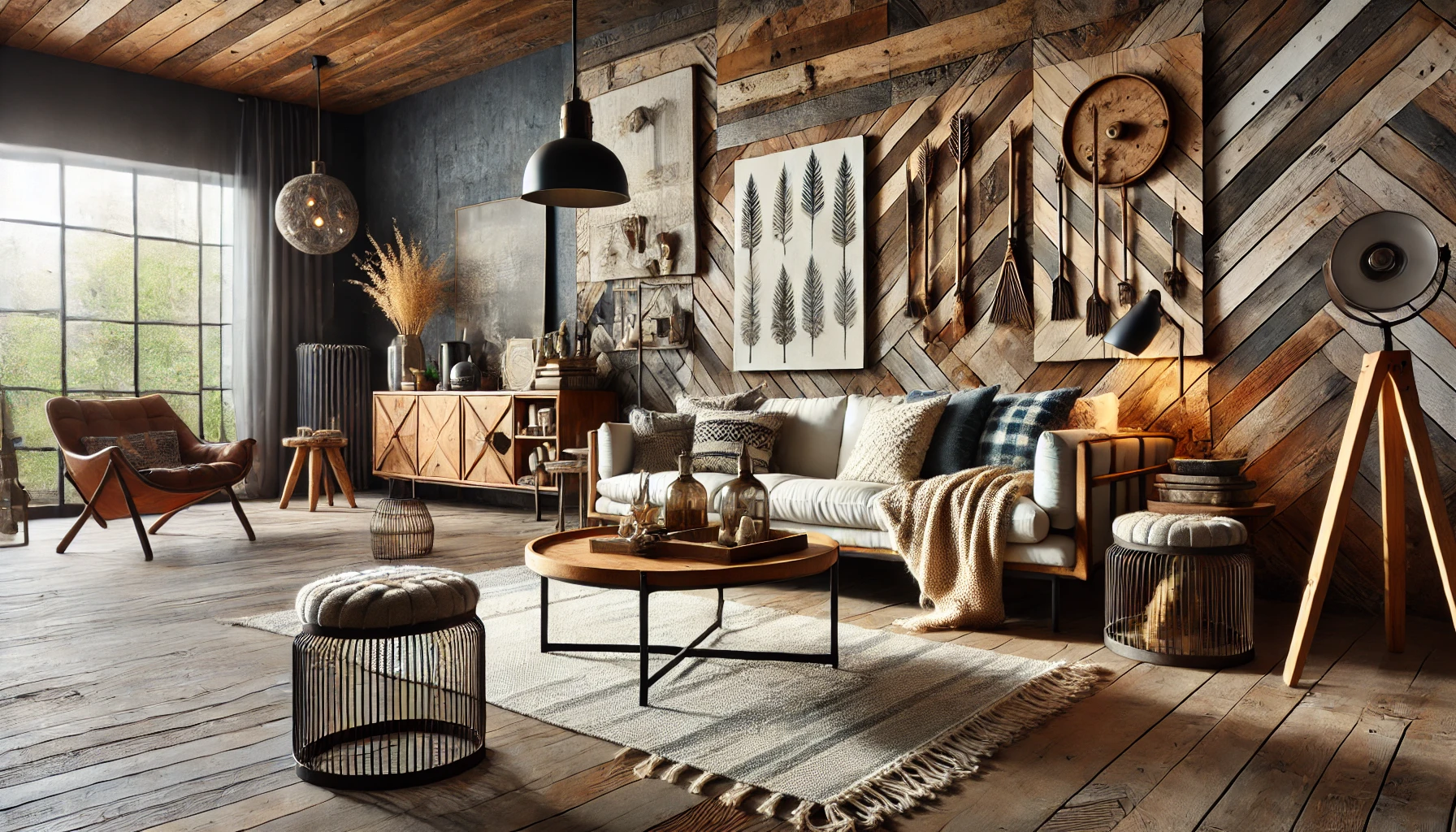
Rustic decor trends continue to evolve, with new ideas emerging that blend the traditional with the contemporary. A key trend is the use of reclaimed wood for statement pieces like coffee tables, headboards, or shelving units. Another popular trend is mixing rustic with industrial elements, such as pairing weathered wood with metal for a more modern, yet still rustic, aesthetic. These trends allow homeowners to create a rustic look that feels fresh and current, while still maintaining the timeless appeal of traditional rustic design.
These trends offer a fresh take on rustic design, making it adaptable to modern lifestyles without losing the warmth and charm that define the style. Experimenting with trends like these allows you to personalize the rustic aesthetic and create a unique look that suits your home and taste. Whether you’re incorporating reclaimed wood furniture or blending rustic and industrial elements, these trends can help you create a home that feels both timeless and contemporary.
Why Rustic Home Design is a Timeless Choice
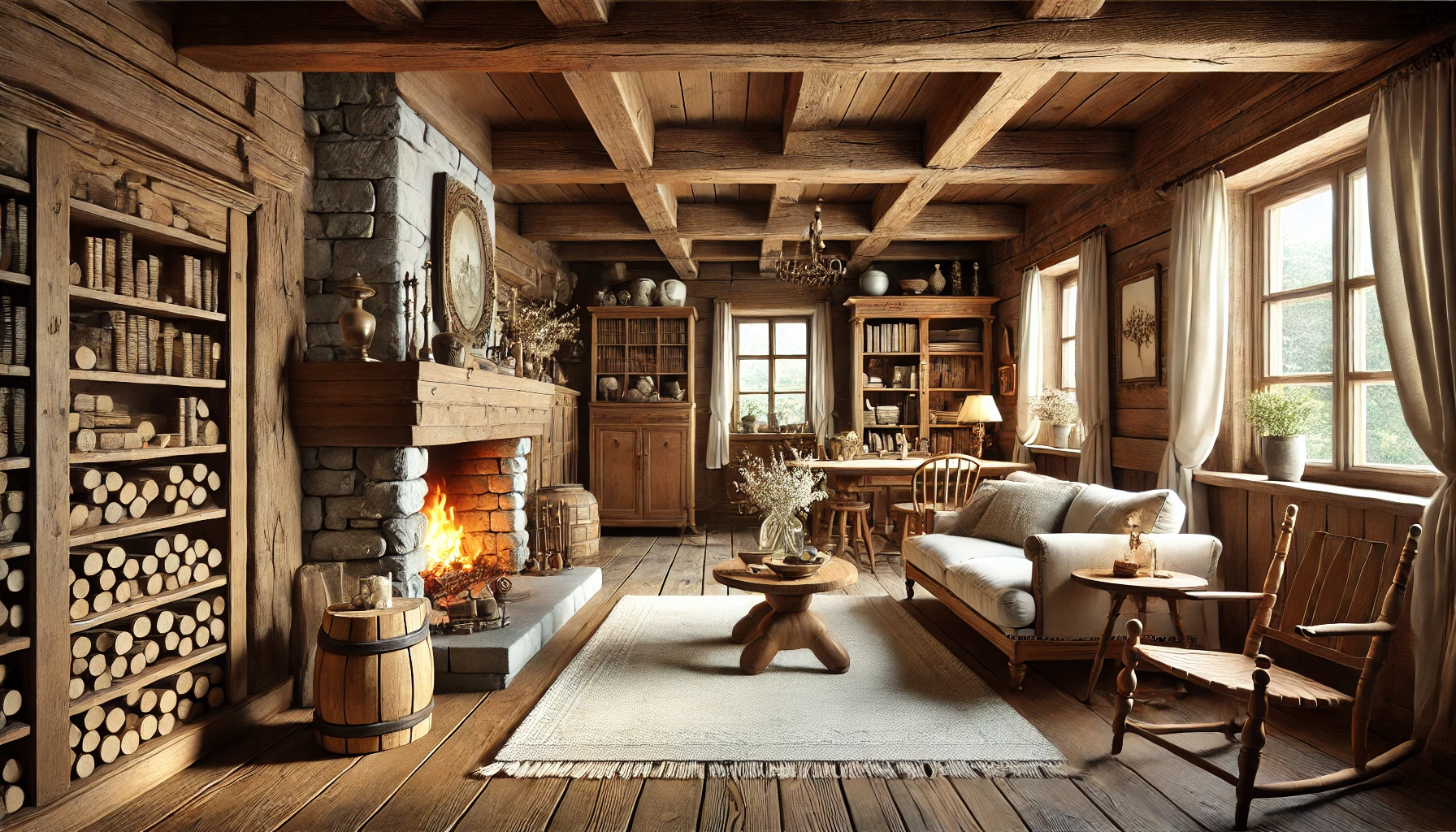
Embrace the Warmth and Comfort of Rustic Home Design
Rustic home design offers a timeless, versatile, and inviting approach to interior design. Whether you’re building a new home or updating an existing space, the rustic style brings warmth, authenticity, and a sense of connection to nature that can transform any room. By using natural materials, focusing on handcrafted elements, and embracing a warm, earthy color palette, you can create a space that feels cozy, comfortable, and stylish. Rustic design is more than just a trend—it’s a way of life that brings people together in spaces that are both functional and beautiful.
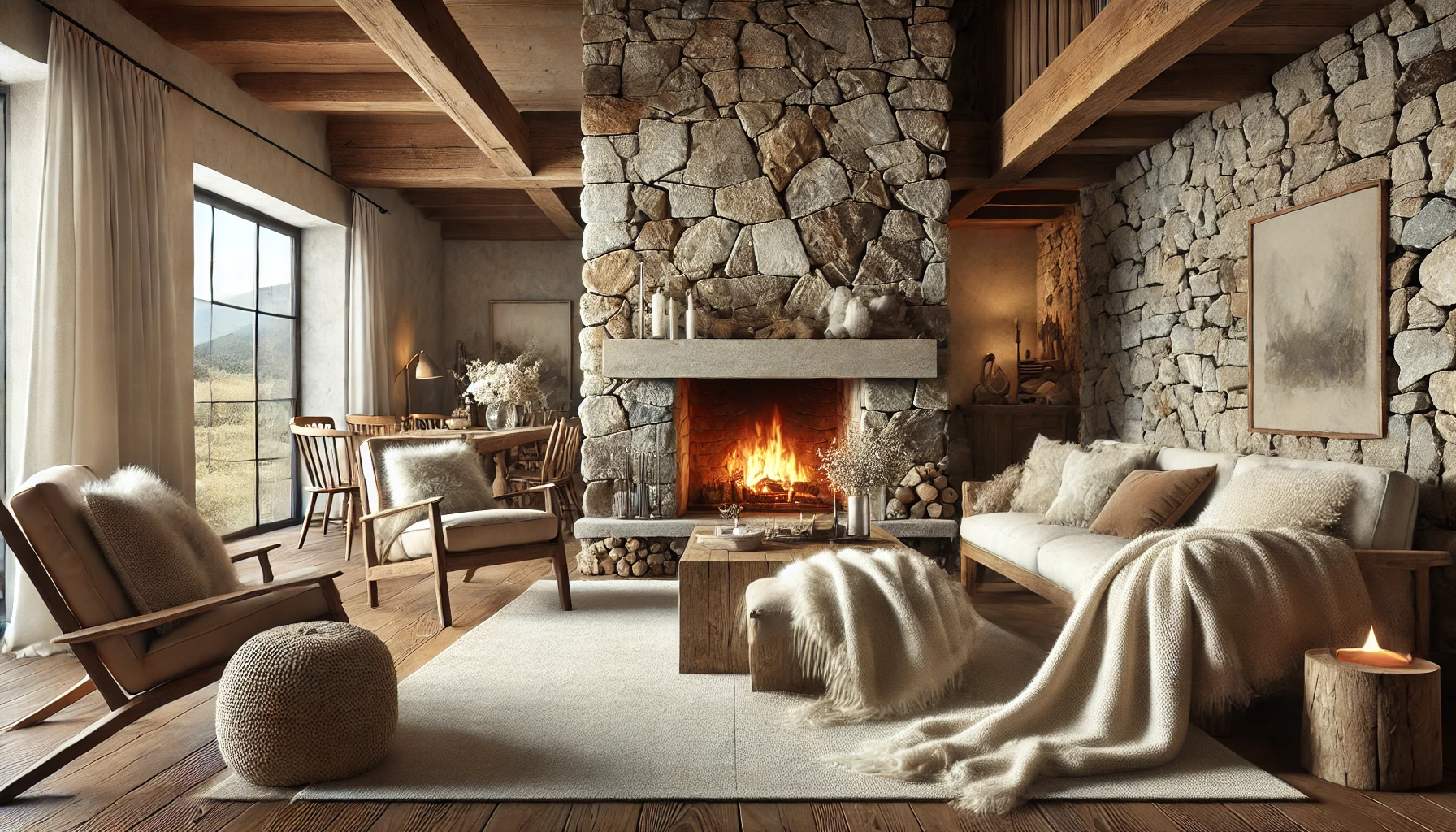
With its emphasis on natural materials and timeless appeal, rustic design provides a perfect balance of form and function. It’s a style that speaks to those who appreciate the beauty of nature and want to bring that beauty into their homes. Whether you’re looking to create a cozy retreat or simply add a touch of rustic charm to your space, this design style offers endless possibilities. So, embrace the warmth and simplicity of rustic home design, and let it transform your living space into a welcoming, comfortable, and beautiful environment.
Start Your Rustic Home Design Journey Today
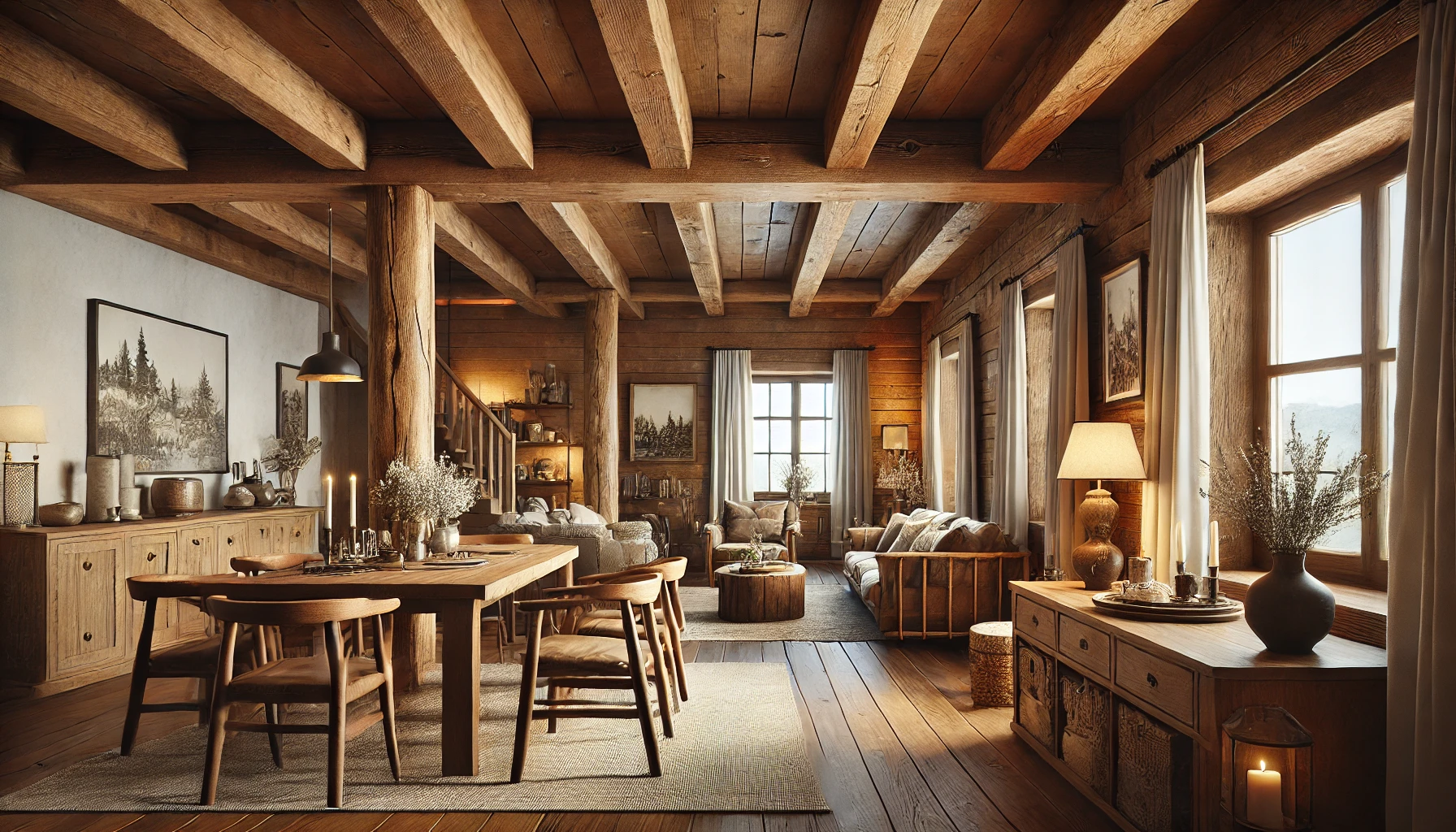
Create Your Dream Rustic Home
Ready to bring the beauty of rustic design into your home? As a professional home designer, I can help you create a space that reflects your personal style and enhances your lifestyle. Whether you’re looking for a full renovation or just want to add some rustic touches to your existing home, I’m here to guide you through every step of the process. Together, we can create a warm, welcoming space that you’ll love for years to come. Contact me today to start your journey toward the perfect rustic home.
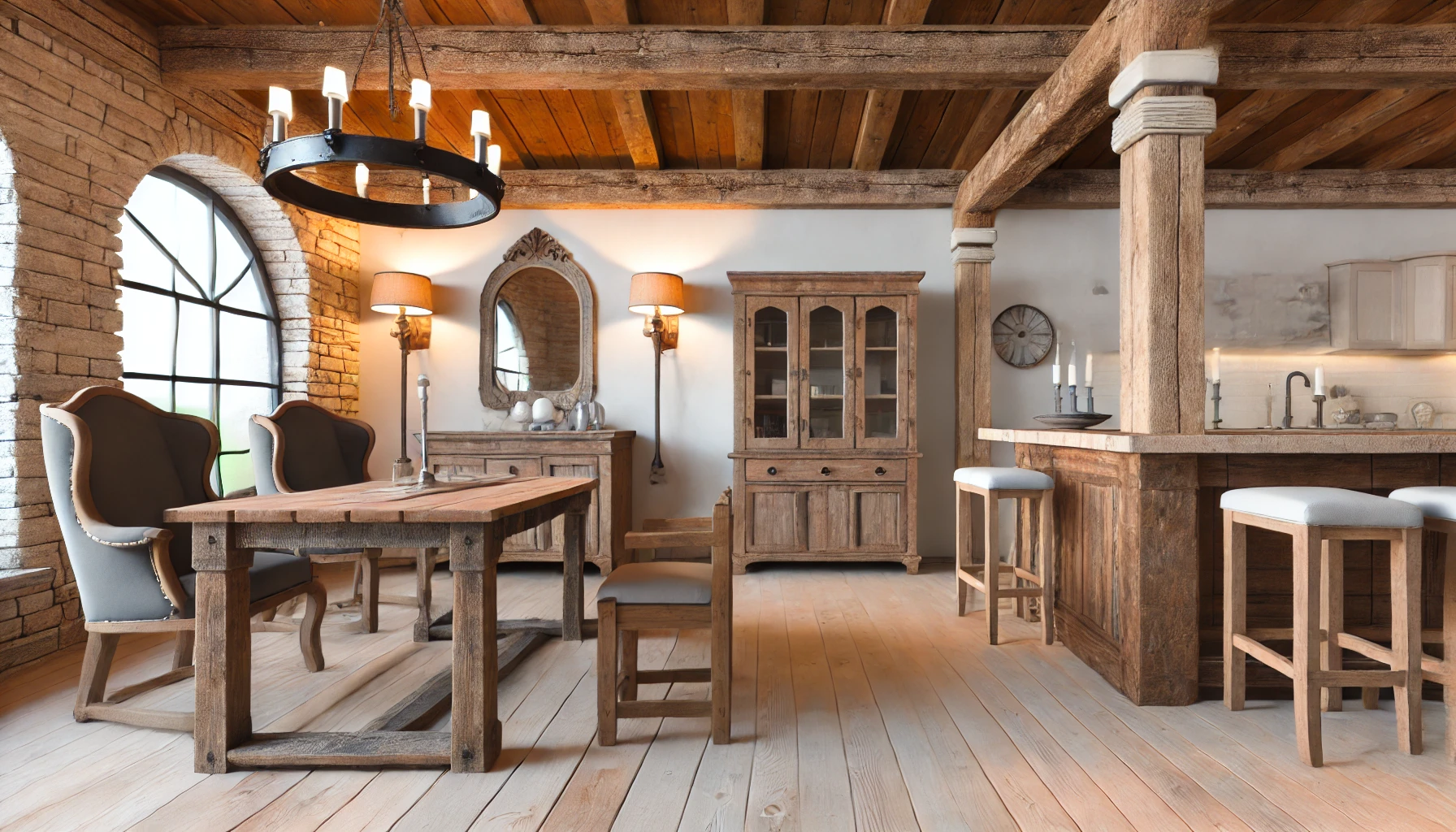
Don’t wait any longer to transform your home into the rustic haven you’ve always dreamed of. With the right guidance, you can create a space that combines the best of nature with the comforts of modern living. From selecting the perfect materials to designing a functional and beautiful layout, I’ll work with you to ensure every detail is just right. So why wait? Let’s start your rustic home design journey today and create a space where you can relax, unwind, and enjoy the beauty of nature every day.
FAQs About Rustic Home Design
What Are the Key Features of Rustic Home Design?
Rustic home design is characterized by its use of natural materials like wood, stone, and metal, along with earthy color palettes. Common features include exposed wooden beams, stone fireplaces, and handcrafted furniture. The overall style emphasizes warmth, simplicity, and a connection to nature.
How Can I Make My Modern Home Look More Rustic?
To give your modern home a rustic feel, incorporate natural materials like reclaimed wood, stone accents, and vintage or antique furniture. Using warm, earthy colors and adding rustic decor like woven baskets, wool throws, and metal lighting fixtures can help create the rustic look. Focus on blending textures and avoiding overly polished finishes.
What’s the Difference Between Rustic and Farmhouse Style?
While both rustic and farmhouse styles emphasize warmth and natural materials, farmhouse style typically has a more refined, clean aesthetic. Rustic design tends to focus more on rugged, raw elements like exposed wood and stone, while farmhouse incorporates lighter, brighter colors and a slightly more modern touch.
Is Rustic Home Design Expensive?
Rustic home design can vary in cost depending on the materials used. Reclaimed wood and natural stone can be more expensive than manufactured materials, but there are ways to achieve the rustic look on a budget by using faux finishes or mixing rustic elements with modern furnishings. Overall, rustic design is versatile and can be adapted to different budgets.
What Types of Furniture Work Best in Rustic Design?
Rustic furniture is often made from natural materials like wood, metal, or leather. Pieces tend to have a handcrafted, vintage look with an emphasis on comfort and durability. Common items include wooden dining tables, leather sofas, and metal or wrought iron accents, all of which contribute to the cozy, lived-in feel of rustic design.
Can I Use Rustic Design in a Small Space?
Yes, rustic design works well in small spaces. The key is to focus on minimal, functional furniture and avoid clutter. Using lighter wood tones, adding mirrors, and incorporating plenty of natural light can help make a small rustic space feel open and inviting. Natural materials and simple decor can create a warm, cozy atmosphere without overwhelming the space.
How Do I Create a Rustic Bedroom?
To design a rustic bedroom, start with a natural wood bed frame, soft wool or cotton bedding, and neutral tones like beige, gray, or cream. Add texture with knitted throws, leather accents, or woven rugs. Rustic lighting, such as a wrought iron chandelier or wooden bedside lamps, can complete the cozy look.
What Are the Best Colors for Rustic Home Design?
Rustic home design typically uses earthy, neutral tones like browns, tans, grays, and greens. Accent colors can include muted reds, oranges, or deep blues to complement the natural materials. The goal is to create a warm and inviting palette that harmonizes with wood, stone, and other raw materials found in the space.
How Do I Incorporate Rustic Elements Without Renovating My Home?
If you’re looking to add rustic elements without a full renovation, start by swapping out decor items. Add rustic accessories like wooden picture frames, vintage lighting, and wool throws. You can also use rustic-style furniture, such as a reclaimed wood coffee table or metal-framed mirrors, to give your space a rustic flair without making major changes.
What Flooring Options Work Best for Rustic Design?
Wooden flooring is a staple of rustic design, but you can also use stone or tile with a natural texture. Reclaimed wood flooring, in particular, adds warmth and character to the space. If you prefer a softer option, consider layering a large, neutral-toned area rug over the floor to enhance the cozy, rustic atmosphere.
How Do I Achieve a Rustic Kitchen Design?
A rustic kitchen design can be achieved by incorporating wooden cabinets, stone countertops, and metal hardware. Exposed beams, open shelving, and vintage-style lighting fixtures add to the rustic charm. Natural, rugged materials combined with warm lighting and practical design elements will give your kitchen a rustic, homey feel.
Can I Combine Rustic Design with Other Styles?
Yes, rustic design can be blended with other styles like modern, industrial, or farmhouse. For example, a rustic-industrial style might mix reclaimed wood with metal light fixtures, while rustic-modern can incorporate sleek furniture alongside natural wood accents. The key is to maintain balance so that the rustic elements don’t overwhelm the space.
What Are Some Easy Ways to Add Rustic Decor to a Living Room?
To quickly add rustic decor to a living room, consider using natural materials like a reclaimed wood coffee table, woven rugs, or leather chairs. You can also add rustic-style accessories such as metal lighting fixtures, wool throw blankets, and stone or ceramic pottery. The goal is to bring warmth and texture into the space.
What Are the Best Rustic Lighting Ideas?
Rustic lighting often features natural materials like wood, metal, or glass. Popular choices include wrought iron chandeliers, vintage-style pendant lights, and metal sconces. You can also incorporate candles or lantern-style lighting to create a soft, warm glow that enhances the cozy, rustic feel.
Can I Achieve a Rustic Look on a Budget?
Yes, you can achieve a rustic look on a budget by focusing on key elements like furniture and decor rather than a complete renovation. Look for vintage or thrifted pieces, use faux finishes for wood or stone, and incorporate DIY projects like creating your own rustic shelving or repurposing old furniture. Small changes can make a big impact in creating a rustic atmosphere.
 Home Designing Get expert home decor tips and design inspiration at HomeDesigning.blog. Transform your living spaces with trending styles and DIY ideas!
Home Designing Get expert home decor tips and design inspiration at HomeDesigning.blog. Transform your living spaces with trending styles and DIY ideas!
